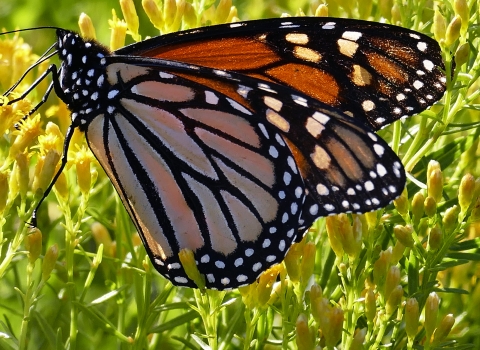The USFWS Library invites you to our Wild Read book discussion featuring Return of the Bison: A Story of Survival, Restoration, and a Wilder World by Roger Di Silvestro. We hope you join us on Thursday, November 14th at 3 PM ETfor our Fall Wild Read to learn more about this symbol of our American identity and one of the greatest conservation success stories of all time.
Return of the Bison is an excellent biography of America's most iconic mammal. Millions of bison once roamed North America, and their history is deeply intertwined with many Indigenous communities. They were integral to Indigenous Peoples, providing meat for food, hides and fur for clothing and shelter, other parts for tools, and still hold great significance today. With westward expansion of European settlers during the 18th and 19th centuries, bison were hunted to near extinction: hunted for subsistence, commercial sale of meat and hides, simply for sport, and other more complex reasons. If it weren't for the work of Tribes, states, and the Department of the Interior, the bison wouldn't be here today. Although they're back from the brink and the security of the species is a conservation success worth celebrating, there remains an ongoing struggle for their recovery.
Let's graze through the bison's rich history with the following questions at our book club meeting.
Discussion Questions
1. Because of forward-thinking individuals, the species was saved from extinction and slowly began to rebound, albeit mostly in privately held herds. Which bison preservationist or bison herd intrigued you most and why?
2. In the 1990s, with modern bison agriculture business rising, bison herds were raised like cattle. Though bison are still classified as livestock in many states, they are no longer treated like the domesticated cattle even though that legacy lingers through their genes. What surprised you most about the relationship between bison and cattle?
3. Wildlife is part of America’s heritage, yet values and priorities vary for each individual when it comes to wildlife on our lands. Coordination between private and public lands is key to wildlife conservation and stewardship of natural habitats. What are ways to work collectively?
4. What did you think about the analogy that di Silvestro draws between the intensive management of bison and the future of other large social species such as elephants?
5. What lessons can we learn from the bison’s remarkable story of recovery?
Brought to you by the USFWS Library, America's Wild Read is a virtual book club where we aim to inspire you to engage with conservation literature and nature writing. We hope you will read along with us as we feature various conservation books every quarter — contemporary, traditional, new, and classic.




